
Rab Torque Vapour-Rise Pants
For cold days of hillwalking, winter climbing or skiing, their combination of warmth, weather-resistance and breathability makes these softshell trousers close to perfect, says Toby Archer.
Cooler than a fleece or a thicker softshell, lightweight, unlined softshells are one of the more versatile pieces of clothing in your outdoor wardrobe, offering a bit of protection from the weather while remaining comfortably breathable and easy to pack.
Runners and backpackers might opt for a minimalist windproof top, but for climbing or scrambling something with a bit more stretch and a lot more durability is preferable. In this group test we're looking at jackets with an active cut and stretchy fabric that's robust enough to stand up to both rock climbing and general hill use.
We've been impressed by the standard of all the products in this review, and would happily recommend any of them; the choice that's right for you is the one that best meets your individual needs.
Review brief: From climbing to scrambling, backpacking to hillwalking, Skye to the Alps, these light, stretchy and breathable softshells are suited to a wide range of uses in spring and summer. Preferred weight range: 250-350g
| Make and model | |
|---|---|
|
Rab Price: £80 Weight: 266g (men's M); 217g (women's 10) Pros: Light yet durable; well cut for movement; exceptional value Cons: Colour choice is a bit dull |

|
|
Montane Price: £160 Weight: 277g (Men's M); 250g (Women's 12) Pros: Great all-rounder; supremely stretchy Cons: Lack of chest pocket; the most expensive product on test |
|
|
Mountain Equipment Price: £130 Weight: 320g (Men's, no size given); 280g (Women's, no size given) Pros: Well balanced set of features for mountain and climbing use Cons: The offset zip is annoying |
|
|
Sprayway Price: £80 Weight: 279g (men's M); 242g (women's 10) Pros: Absolute bargain at the price. Great fit, lovely fabric, good all-rounder Cons: Missing a couple of features that you might find on more specialist softshells |

|
|
Patagonia Price: £130 Weight: 100g (Men's M); 87g (Women's 10) Pros: Extremely lightweight, extremely breathable Cons: Doesn't provide as much protection from the elements as others on test |
|
|
Black Diamond Price: £150 Weight: 207g (men's M); 183g (women's S) Pros: Light, good stretch, durable, and adjustable Cons: Lighter colours are easily stained; it's looking pricey |
Reviewed by Dan Bailey UKH and Sarah Jane Douglas
A slightly stripped-down take on Rab's tried-and-trusted Borealis softshell, the Borealis Alpine is more versatile than its name might suggest. While you could very much wear it in the Alps, we've also found it ideal for breezy crag days, hillwalking, and lightweight backpacking. In fact there's not much you can't do in it. With its climbing-friendly cut, light, stretchy and breathable fabric, and highly competitive price tag, the Borealis Alpine is a real winner.
At just 290g men's size L (Rab say 266g men's size M / 217g women's 10) the Borealis Alpine counts as a lightweight softshell by any measure. It's compact when stuffed into its own chest pocket, fitting neatly into a small day pack or clipping unobtrusively to a harness.
While light enough for weight-conscious alpine climbing or backpacking, it doesn't feel at all flimsy for its weight, and we've found it sufficiently tough for regular rock climbing and scrambling - within reason. For an all-round summer softshell, Rab have perfectly judged the balance between lightness and durability.
The stretch fabric allows total freedom of movement when climbing. It keeps out a good deal of wind on a cold day, but this doesn't seem to compromise breathability; we've found you can work up a good sweat in the Borealis Alpine, without getting all clammy inside. Could you even run it it? A bit much for summer perhaps, but we wouldn't rule it out in winter. It's quick-drying too, and sheds light drizzle thanks to the fluorocarbon-free DWR.
The Borealis Alpine is available in both men's and women's fit. The cut is reasonably roomy, allowing for a couple of layers beneath if it's chilly, but still manages to feel fitted and streamlined enough when climbing. Hem and sleeve length are reasonably generous, and we get only minimal hem lift with arms raised.
A single phone-sized chest pocket is all you get - and in a minimalist softshell we reckon that's really all you need. The stretch-bound hood and cuffs are simple and non-adjustable - which again seems apt. When climbing, the hood goes better under your helmet than over it, and if you're not wearing a helmet it has a nice close fit - yes it'll flap in the wind like all unstructured hoods, but not too badly. For some it may be a minor shame that the Borealis Alpine is not also offered in a hoodless version, since not everyone likes one. The single hem adjustment is fine, but the slight niggle is that this does give you a long tail of elastic hanging down.
View websiteReviewed by Rob Greenwood UKC and penny.orr
The Tenacity Nano ticks a lot of boxes. It's got a great cut, a seriously impressive amount of stretch, and a good balance between weight and durability. As a result of this it's incredibly versatile, both in terms of the activities you're able to do with it and the seasons within which you can use it.
The first thing you notice whilst wearing the Tenacity Nano is how unbelievably stretchy it is. It provides completely unrestricted freedom of movement, so much so that you could easily forget it's on. It's also extremely breathable, which further adds to its versatility, as it's something you could use throughout different seasons by adapting what you're wearing underneath.
The stretch material used throughout also provides a good balance between weight and durability. It's light, but not so light that it falls apart the second it comes into contact with rock, and comes in at 277g in a men's medium and 250g in a women's 12. In fact, throughout the many months of use its had so far we've both been impressed by its durability.
In terms of usage, you could use the Tenacity Nano for pretty much anything: climbing, scrambling, mountaineering, and hillwalking (even running or mountain biking too).
The Tenacity Nano features a trim fit, without being tight. It's got a good length throughout both the body and the arms, which is great when you're climbing or scrambling. The stretch is the icing on the cake though, because whilst the cut - in isolation - is good, the extra stretch makes it something special.
The Tenacity Nano features two hand warmer pockets, which are sufficiently high to fit over a harness, which is a nice touch from a climbing and mountaineering perspective, whilst still being completely functional whilst you're out hillwalking. The hood is similarly adaptable, sitting somewhere in the middle in terms of volume. On its own, it's a little loose, but the upshot of this is that you can - if necessary - fit a helmet under it. It's great that a hood-free version of the Tenacity Nano is also available (£150), since not everyone wants a hood on every layer.
If there was one thing we could change it would be to add a chest pocket you could stuff the jacket into, because as it stands it's not got any way of carrying it - shy of using a separate dry bag. This is also where we'd want to carry a phone, ideally.
Reviewed by John McKenna - Rockfax and Elle Hopkins
The Squall is designed primarily with climbers and mountaineers in mind, and it's great for breezy cragging sessions, although we've found it equally well suited to scrambling, and hillwalking where you need a layer that won't hold you back. With a well-tailored athletic cut, tough yet breathable fabric, and a sensible feature set, the Squall is a dependable multi-activity softshell that keeps things simple without feeling stripped down.
At just 331g for John's men's M and 313g for Elle's women's XS, the Squall is firmly in lightweight softshell territory, albeit a touch heavier than some of the models on review here. It packs into its own pocket small enough to clip to a harness—ideal for breezy belays or when the wind picks up mid-pitch.
Despite the low weight, the Exolite 125 double-weave fabric feels impressively tough, having stood up well to rough rock throughout the season so far. It's a great match for spring-to-autumn climbing and scrambling, offering wind and light rain protection without the bulk.
Breathability is excellent, making it ideal for stop-start activity. It's quick-drying, sheds light showers with its PFC-free DWR, and handles gusty walk-ins and belays with ease—though, like any softshell, you'll want a proper shell for sustained rain.
The Squall's trim, active cut is spot-on for climbing—snug enough to avoid flapping, yet roomy enough for a thin fleece underneath. The long sleeves and slightly dropped rear hem offer good coverage, and the articulated design plus stretchy fabric give excellent freedom overhead. The fit works well for both John and Elle, who are on the narrower side—but it should still suit broader builds too. As always, it's best to try before you buy.
For climbing, it layers cleanly under a harness, and the hood fits well with or without a helmet, offering solid coverage in both setups - something that seems like an art to get right.
The Squall keeps things streamlined yet functional for climbing. A single Napoleon chest pocket fits a phone or snacks and doubles as a stash pouch for packing the jacket away.
The wired hood brim holds its shape well in the wind, and the low-profile adjustment system lets you dial in a snug, protective fit. All drawcords are anti-snag—especially handy at the hem, where accidental gear clips are common.
Our one gripe is the offset zip: while great for coverage when fully done up, it flaps awkwardly when unzipped for ventilation—distracting just when the climbing starts to heat up. It looks a bit odd for day to day use too.
Velcro cuff tabs offer more adjustability than elastic cuffs — though in a jacket this light and streamlined, we could personally live without them.
Unlike more stripped-back softshells, the Squall feels genuinely mountain-ready, but without sacrificing packability or performance.
View websiteReviewed by Tim Hill UKC and EmmaHill
In recent years Sprayway has consistently produced a range of good-value outdoor clothing, exemplified by the Men's Hallin Hoody and Women's Charn Hoody. These jackets are essentially the same in terms of features, made from lightweight soft shell fabric, which offers wind resistance and light shower protection at an excellent price. Designed mainly for hillwalking, this jacket is also more than suitable for cragging. Featuring clean and simple features, it is worth a look for anyone on a budget.
The Hallin and Charn are designed and marketed as being primarily for hillwalkers, and whilst we have used them whilst hillwalking - and they've been great - their versatility means they are suitable for a whole lot more than that. From a climber's perspective, or someone who's out scrambling, the cut is fantastic, with good freedom of movement, further aided by a four way stretch that allows you to move your arms around without any lift across the hemline. The only caveat to its application in climbing is that you'd struggle to get the hood on over a helmet, but that's not necessarily an issue given you can fit it under - plus you're stretching what it was actually designed for!
Weight wise the men's comes in at 279g (size medium) and women's 242g (size 10), which is on a par with other more premium jackets in this group test - despite the fact the Hallin and Charn are quite literally half the price of some. In fact, for the price we'd say that this softshell is an absolute bargain.
Tim really likes the fit of the Hallin jacket. He's usually a standard medium, and there's enough room to put on a fleece layer underneath, but not too much excess fabric, so when it's windy you don't turn into a giant sail! This jacket fits well under a harness, and the stretch in the fabric allows for a great range of movement. The cuffs are fully elasticated and can be pulled up (which some folk do like to do when climbing, or walking on a warm day), and the hem is semi-elasticated at the side, which keeps the fit close to your body.
Sprayway use their own stretchy polyamide fabric with a DWR finish.
Both jackets feature two large hand warmer pockets, but not a chest pocket. None of these are reversible, so there's no way to stuff it inside itself; however, the jacket does fold up neatly within its own hood - as pictured.
View websiteReviewed by Rob Greenwood UKC and penny.orr
The Airshed Pro is the lightest softshell in this group test. But this is because it is very different to the rest, being designed primarily for running. It's exceptionally breathable as a result of this, more so than any other we're reviewing; however, the flip side to this is that it's also the least protective from the elements. As a result its relevance depends on exactly what you want to use it for and when. Where the other softshells are more generalist in use, albeit generally leaning towards climbing, this lighter windproof top is more of a niche specialist.
The Airshed Pro is something that both of us have fallen in love with, but something that comes with a couple of caveats. It's extremely light (100g men's medium / 87g women's 10), and extremely breathable, which is great whilst you're moving fast, but if you're doing something less dynamic - or it's extremely cold and windy - then this is unlikely to be the layer for you.
However, on a cool day, whilst running or hillwalking, I cannot think of a more comfortable top to wear. It's got a lovely, soft and stretchy feel to it, and it's a softshell we've both found ourselves reaching for time and time again, over a great many other options. One major point of difference to the rest on test is its hybrid construction. The body and upper arms are made from a wind-resistant material, which is what helps to protect you from a cool breeze, whereas the lower arms and hood are made of a lightweight baselayer material, which provides maximum air permeability.
Whilst it can be worn climbing, as its fit is fantastic, the limiting factor would be durability. Due to the lightweight materials it's not the most snag resistant, and whilst we haven't had any issues with wear and tear, we have treated it with care. If you're after something that would take a sustained scratching from rough rock, be that while climbing, mountaineering or scrambling, then it's probably best to look elsewhere.
The Airshed is very fitted, insofar as it fits less like a jacket and more like a lightweight base layer. It's not tight, but it is snug, with barely any excess material. You wouldn't be layering this over a midweight fleece. Despite this it's got a high stretch material throughout, which provides excellent freedom of movement. It comes in a men's and women's fit, both of which are on review here.
The Airshed Pro has some really subtle, but well-thought-out features. The first of these is the zip pocket, which is useful for storage, and is also reversible - hence can be used as a stuff sack. It also features a two-way zip, which is great for venting, without having to use the top zip and make the collar flap around a load (which is annoying whilst running). It also has a really nice, snug hood, which fits incredibly well.
View websiteReviewed by Xa White UKC and Rburney
Targeted at climbers and mountaineers who want a there-but-barely-there layer to protect them from surprise showers or unexpected wind, the Black Diamond Alpine Start Hoody is a tough, well-designed, stretchy, and adjustable solution.
Movement is easy and restriction-free in the Alpine Start Hoody. Whilst lifting your arms above your head will result in some hem lift, the stretch-woven fabric and the somehow both generous and slim fit of the hoody means that you feel completely uninhibited when climbing or scrambling, which in turn means it will quickly become your go-to for those almost-t-shirt-weather days.
For all activities less strenuous than running the Alpine Start is plenty breathable, and whilst that breathability doesn't quite extend to running, it's nonetheless a great layer to take the chill off those first five minutes of a frosty jog, because it's so lightweight that carrying it for the rest of the run won't feel like a burden.
In terms of numbers, our Men's Large comes in at a 215g, whilst our Women's S weighs 183g. Compared to others in the test, that's definitely on the lighter side, which is especially impressive when you consider the adjustability that isn't found in some of the others on test, and the excellent durability on offer.
In fact, it is the durability of the Alpine Start Hoody which has impressed us most, having tested it even more thoroughly than intended when one of us (Xa) fell out of a tree whilst wearing it. After taking a moment to assess the damage to both human and fabric, it was clear the fabric at least had almost no signs of wear at all. After plenty more gritstone bouldering it has seen no further damage; so full marks for durability.
As such, the Alpine Start Hoody would be suitable for all sorts of activities, from gentle hiking through to more extreme mountaineering (or tree climbing), and everything in between.
The only real downfall that we have found is that the yellow version, one of the lighter colours on offer, is quite easily stained, and it's quite hard to remove them.
The Black Diamond Alpine Start comes in men's and women's fits, with the women's slightly more fitted around the waist. It's a relatively slim cut, but still allows for a single layer beneath. Attempts to wear Black Diamond's Approach Down Hoody underneath were successful, but resulted in a michelin-man-esque appearance. Hem and sleeve lengths are just right, allowing full coverage whilst stretched out during climbing without being too baggy.
Non-adjustable elastication of the sleeves is well balanced, tight enough to stop them from falling down over the palms, but not so tight as to become uncomfortable when pulled up the forearms.
Elastication of the hem is isolated to two side-panels, which allows a close fit without the scrunching that you can get with a fully elasticated hem. The hood features a single drawstring for adjustability, allowing for a helmet to fit underneath quite comfortably, whilst also offering a closer and less cavernous fit for those times that a helmet is not required.
The standard single chest pocket is easily large enough to fit a phone and a couple of snacks, and also comfortably fits the jacket inside. It also sports a small clip loop to allow the jacket to be attached to a harness. Whilst the Alpine Start Hoody does feature a PFC-free DWR coating, it's windy weather that this softshell really excels in. As for all the other softshells on test, for anything other than a light shower you'd want a designated waterproof shell.
View websitesoftshell

For cold days of hillwalking, winter climbing or skiing, their combination of warmth, weather-resistance and breathability makes these softshell trousers close to perfect, says Toby Archer.


Built for tough rather than light, the Khamsin is a versatile softshell that offers plenty of breathability and loads of stretch for free movement. It's not cheap, but should last for years, says Dan Bailey.


A "long-sleeved t-shirt with attitude", this light, stretchy and breathable mountain top has found a niche in his wardrobe that Dan Bailey didn't know he needed to fill. Shame about the cut, he says.
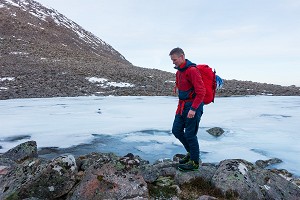
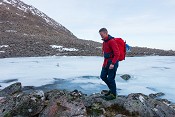
Quick-drying, breathable, and very warm for their minimal weight, these lined softshells make a...


"The pockets are large enough for a bottle of wine in each, and can still be accessed when wearing a...


When you want some protection from the elements, but a full shell would be overkill, a thin windproof is the obvious...
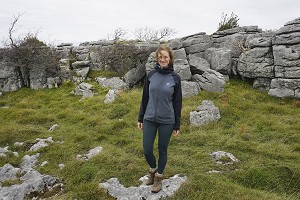
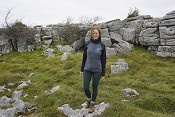
Technical mountain jackets are great in their place, but if you're just out for a walk in chilly autumn or winter...
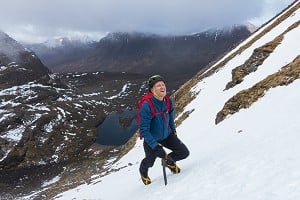

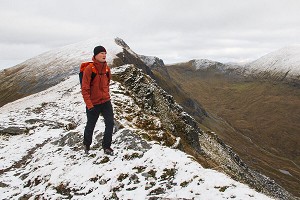

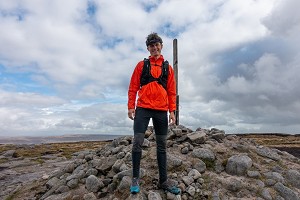
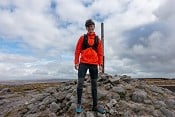
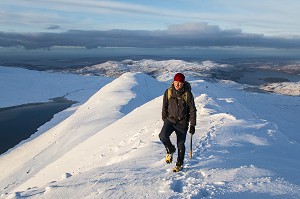
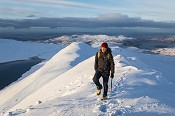

Comments
In a world of very expensive kit the Rab Borealis seems like a good price. I've had the normal version for a couple of months and it's nearly always either worn or in my pack on a day out. If I was being fussy I'd add a chest pocket to my regular version but that's probably all I'd change.
Not sure what is going on with that very long hood elastic on the Black Diamond. I can see it catching annoyingly...
I've not found that in practice. It is a brilliant hood with or without a helmet for such a light softshell. Quite the feat imo.
Toby A did a great review of this a while back.
You have a great memory - published in June 2018, but I was testing through the excellent winter of 17/18! https://www.ukclimbing.com/gear/clothing/softshell/black_diamond_alpine_start_hoody+alpine_light_pants-10834
The ME Echo is a great alternative to the squall if you don't like the offset zip. I've found it to be of better quality than the Borealis